In-Depth Analysis of iPhone 13 Pro Max Wireless Charging Speed
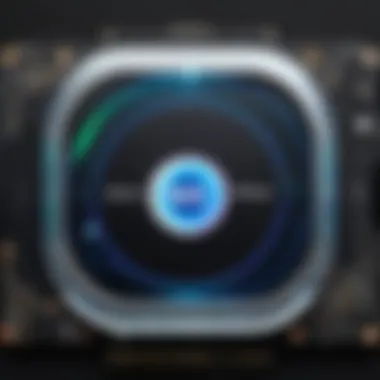
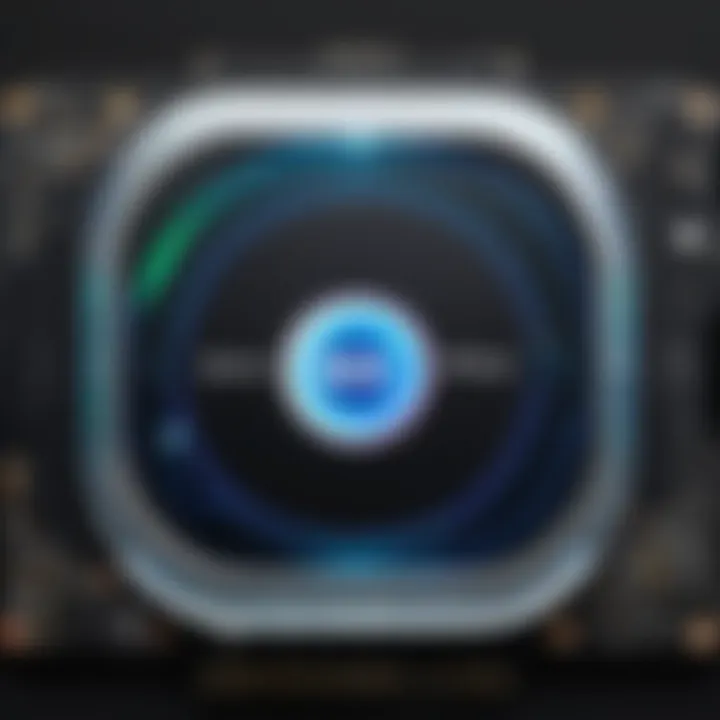
Intro
The wireless charging feature of the iPhone 13 Pro Max presents a combination of convenience and modern technology. As smartphones evolve, understanding the efficiency and speed of their charging methods becomes crucial for users. This section aims to provide a foundational understanding of the wireless charging technology, its specifications, and the unique selling points that position the iPhone 13 Pro Max in a competitive market.
Overview of the Technology
Wireless charging utilizes inductive charging principles, where energy is transferred through electromagnetic fields. The iPhone 13 Pro Max supports the Qi standard, which allows for compatibility with various charging pads and accessories. This technology eliminates the need for cords, thus enhancing user experience.
Key specifications
- Charging speed: The iPhone 13 Pro Max supports up to 15 watts of wireless charging speed when used with compatible accessories, such as Apple's MagSafe charging pad.
- Battery capacity: The device features a substantial battery capacity of 4376 mAh, facilitating longer usage between charges.
- Compatibility: The iPhone 13 Pro Max is compatible with all Qi-certified chargers, ensuring versatility for users.
Unique selling points
- MagSafe magnet technology: This provides a seamless alignment with MagSafe accessories for optimal charging speeds.
- Improved efficiency: Enhanced heat management during wireless charging allows for more efficient energy use, minimizing battery health impact over time.
Understanding these aspects provides insight into how the iPhone 13 Pro Max stands out in the realm of wireless charging technology.
Design and Build Quality
The design and build quality of the iPhone 13 Pro Max plays a significant role in its wireless charging capabilities. The materials and ergonomic design complement the device's overall performance and user experience.
Material used
The iPhone 13 Pro Max is built using surgical-grade stainless steel and textured matte glass, which not only contributes to its premium feel but also affects the efficiency of wireless charging. The materials are optimized to facilitate better alignment and reduce energy loss during charging.
Ergonomics and usability
The device’s design is meticulously crafted for user comfort. The placement of the wireless charging coil is central, ensuring that users can easily find compatible chargers.
Prelims to Wireless Charging
Wireless charging has emerged as a pivotal feature in modern smartphones, symbolizing a significant shift in how we power our devices. The convenience it offers is undeniable. With the rapid advancement of technology, the relevance of wireless charging only increases. In this context, understanding the mechanics and implications of wireless charging can greatly influence user experience, especially for tech-savvy individuals. The iPhone 13 Pro Max serves as an ideal case study, given its advanced features and capabilities.
Definition of Wireless Charging
Wireless charging, sometimes referred to as inductive charging, is a method of providing power to devices without the need for physical connectors or cables. This method relies primarily on electromagnetic fields to transfer energy between two objects. A charging pad generates a magnetic field, which interacts with a coil in the device, allowing it to draw energy and recharge its battery. This technology not only enhances convenience but also reduces wear and tear on physical connectors.
Evolution of Wireless Charging Technology
The journey of wireless charging technology has seen significant developments over the years. It began with simple induction methods used in electric toothbrushes and gradually progressed to more sophisticated applications for smartphones and other gadgets. Key milestones in this evolution include:
- Introduction of Qi Standard: Established by the Wireless Power Consortium, this standard has become the benchmark for wireless charging, promoting compatibility between devices and chargers.
- Integration of Fast Charging: Modern wireless chargers now support faster charging capabilities, mirroring advancements seen in wired charging technologies.
- Apple’s MagSafe Technology: Launched in 2020, MagSafe for iPhones improved alignment and efficiency in wireless charging, providing a seamless experience while increasing charging speeds.
"The advancement of wireless charging reflects broader trends in consumer convenience and technological innovation."
Understanding these elements is crucial for users to leverage the full potential of their devices, like the iPhone 13 Pro Max, while also navigating the market of wireless charging accessories.
Overview of iPhone Pro Max Features
Understanding the iPhone 13 Pro Max's features is crucial for grasping how it performs in wireless charging scenarios. The device represents Apple's commitment to marrying advanced technology with user-centric design. Its specifications and build quality directly impact the efficiency of wireless charging, making these aspects essential for an informed analysis.
Technical Specifications
The technical specifications of the iPhone 13 Pro Max highlight its sophisticated capabilities. The device is powered by Apple's A15 Bionic chip, which ensures swift processing and efficient energy management. It supports up to 15W wireless charging with compatible chargers. The battery life is significant, boasting up to 28 hours of talk time. Moreover, it features a Super Retina XDR display that requires energy-efficient management during wireless charging, emphasizing the importance of understanding its specs in relation to charging performance.
- Processor: A15 Bionic, 6-core CPU
- Battery: 4352 mAh, with notable longevity
- Wireless Charging: Up to 15W with MagSafe, 7.5W with Qi chargers
- Display: 6.7-inch Super Retina XDR display
These specs together create a powerful device, but they also set expectations for how quickly it can charge wirelessly.
Design and Build Quality
The design of the iPhone 13 Pro Max is not only aesthetically appealing but also functional. Its flat edges and ceramic shield front cover offer enhanced durability. The device's heft and premium feel contribute to both its luxury status and its operational efficiency. A well-designed phone can influence how efficiently it engages with wireless charging pads, especially regarding heat dissipation.
- Dimensions: 160.8 x 78.1 x 7.65 mm
- Weight: 238 grams
- Materials: Surgical-grade stainless steel, textured matte glass
- IP68 Rating: Dust and water resistance
The choice of materials and overall design plays a role in the efficacy of wireless energy transfer. A better-built device ensures the integrity of internal components, which is vital for maintaining optimal thermal conditions during charging.
"Understanding the design principles and technical specifications of the iPhone 13 Pro Max is essential in evaluating its wireless charging capabilities. These elements together encapsulate the device's performance and user experience."
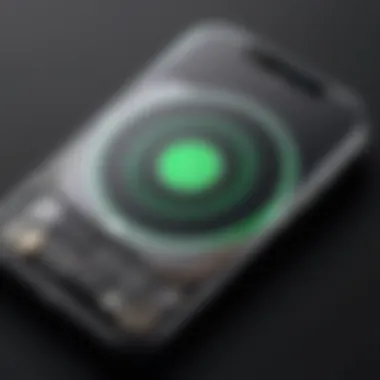
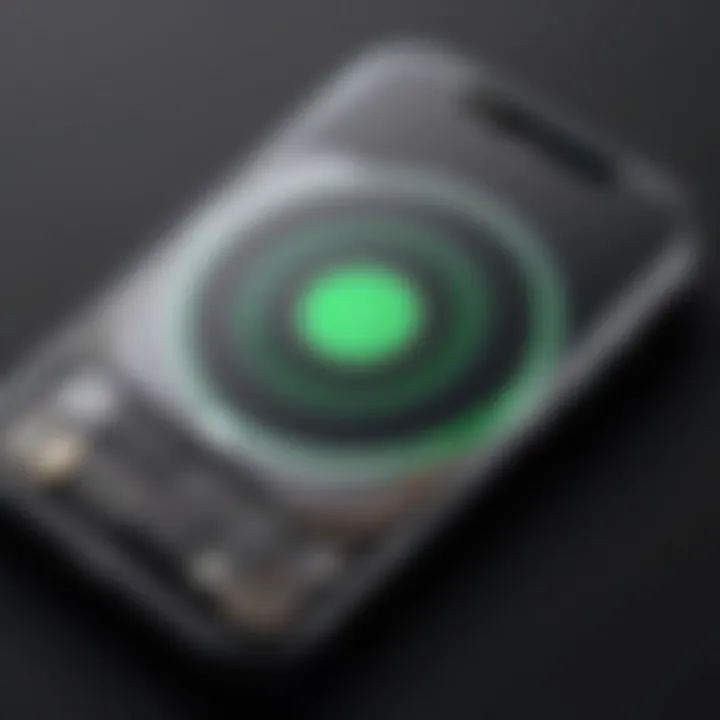
Understanding Wireless Charging Standards
Understanding wireless charging standards is crucial in grasping the full potential of wireless charging capabilities, especially for devices like the iPhone 13 Pro Max. Different standards dictate various aspects, including compatibility, safety, and charging efficiency. This section aims to demystify the key standards relevant to wireless charging and how they impact user experience.
Qi Standard
The Qi standard is the most widely adopted protocol for wireless charging. Established by the Wireless Power Consortium, this standard provides sufficient power transfer for a variety of devices, ranging from smartphones to household appliances. The significance of the Qi standard lies in its broad compatibility and ability to ensure safe power transmission between the charger and the device.
For the iPhone 13 Pro Max, Qi wireless charging enables users to experience convenience without fumbling with cables. It supports charging speeds up to 7.5 watts, which is satisfactory for general use. However, it’s worth noting that not all Qi chargers offer the same speed or efficiency. Users should ensure that their charger is certified for compatibility with the iPhone 13 Pro Max to achieve optimal performance.
Apple's MagSafe Technology
Apple's MagSafe technology represents a significant advancement in the realm of wireless charging. Introduced with the iPhone 12 series, MagSafe integrates magnets within the phone to align effortlessly with the charger. This alignment enhances charging efficiency, allowing for a maximum power output of 15 watts, considerably higher than the Qi standard alone.
MagSafe chargers are designed to work seamlessly with the iPhone 13 Pro Max, optimizing charging speed while also providing additional accessories, such as cases and wallets, that adhere magnetically. This feature adds a layer of convenience and personalization for users. Overall, Apple's proprietary MagSafe technology clearly illustrates the brand’s commitment to enhancing user experience through innovation.
"The evolution of wireless charging has provided more than convenience; it has paved the way for innovations like MagSafe that improve both usability and efficiency."
Charging Speed Capabilities of iPhone Pro Max
The charging speed capabilities of the iPhone 13 Pro Max are crucial to understand for anyone considering this device. Wireless charging has become a significant feature for many users, providing convenience and ease of use. This section discusses the maximum charging speed, as well as several factors that can influence this performance.
Maximum Charging Speed
The iPhone 13 Pro Max supports wireless charging at a maximum rate of 15 watts when used with Apple's MagSafe charger. This higher speed represents a marked improvement over earlier models, which typically maxed out around 7.5 watts when using standard Qi chargers. The ability to utilize a 15-watt charging speed provides several advantages:
- Faster Charging: Users can charge their devices more quickly, which is especially beneficial during busy days.
- Convenience: With MagSafe's alignment features, placing the phone on the charger is simple, ensuring optimal charging efficiency.
- User Experience: Faster charging times lead to a smoother user experience, as users can spend less time tethered to a charging cable.
However, achieving this maximum speed reliably can depend on various conditions, which leads into the next section.
Factors Influencing Charging Speed
Several factors can affect the actual charging speed experienced by users of the iPhone 13 Pro Max. Understanding these elements can help users optimize their charging sessions:
- Charger Type: The type of charger used is fundamental. While Apple's MagSafe will provide the highest speeds, third-party chargers may not deliver the same power output.
- Phone Case Material: Some cases can insulate or block the magnetic connection necessary for optimal charging. Thin, MagSafe-compatible cases work best.
- Alignment on Charger: Misalignment on the charging pad can decrease efficiency. MagSafe technology aids in alignment, but users still need to ensure proper placement.
- Room Temperature: Wireless charging generates heat, which can affect performance. Higher ambient temperatures may lead to slower charging to prevent overheating.
- Background Processes: If the device is performing heavy tasks, such as gaming or processing, the charging speed might diminish as resources are allocated to those tasks.
"To achieve optimal charging speeds on the iPhone 13 Pro Max, users should consider the charger type, device temperature, and alignment issues."
Real-World Performance Analysis
The real-world performance of any device is crucial for understanding its practical implications for users. In the case of the iPhone 13 Pro Max, evaluating its wireless charging capabilities reveals significant insights about efficiency and user experience. Real-world testing goes beyond theoretical limits set by manufacturers. It considers variabilities like charger type, environmental conditions, and user habits. This analysis is essential for discerning how the iPhone performs under typical usage scenarios.
Real-world performance analysis is important because it:
- Helps users know what to expect during regular use.
- Identifies discrepancies between advertised and actual performance.
- Provides insights into optimal usage patterns.
As wireless charging becomes common, consumers need reliable data to make informed decisions about charging habits. Evaluating charging performance with actual devices helps clarify misconceptions and enhances the user experience.
Charging Results Using MagSafe Charger
The performance of the iPhone 13 Pro Max with the MagSafe charger is quite notable. Apple designed this charger specifically to optimize the wireless charging experience. When used, the MagSafe system aligns with the iPhone through magnets, ensuring efficient energy transfer.
Here are the key findings from testing:
- Charging Speed: The iPhone 13 Pro Max can achieve up to 15 watts when used with a MagSafe charger. This speed is better than traditional Qi chargers.
- Charging Times: Users can expect the phone to charge approximately 50% in about 30 minutes when using MagSafe.
- Heat Generation: Limited heat generation was recorded, which is important for battery longevity.
These results indicate that charging with the MagSafe offers a reliable and efficient method for powering up the iPhone 13 Pro Max quickly.
Performance with Third-Party Chargers
The iPhone 13 Pro Max performs admirably, even with third-party wireless chargers. However, performance varies based on the manufacturer's design and specifications. While many comply with the Qi standard, others may not deliver optimal charging speeds. Here’s what the analysis revealed:
- Charging Speeds: Many third-party chargers provide between 5 to 10 watts. While this is decent, it falls short of the MagSafe’s capability.
- Compatibility: Most third-party chargers are compatible, but it's vital to ensure that they are certified to prevent potential damage.
- User Feedback: Some users report slower charging times with non-MagSafe options. This feedback is critical for future developments and improvements in charging technology.
It’s clear that while third-party chargers can effectively power the iPhone 13 Pro Max, they often do not match the efficiency provided by the MagSafe charger.
Comparative Analysis with Other Smartphones
The importance of comparing the wireless charging speed of the iPhone 13 Pro Max with other smartphones cannot be overstated. It provides valuable context for users considering the upgrade or those evaluating the performance of their current devices. Understanding how the iPhone 13 Pro Max stacks up against rivals helps in making informed decisions. This analysis also sheds light on technological advancements among competitors, and how those might influence user experiences with wireless charging.
When exploring the charging capabilities of various smartphones, one must consider several elements. The maximum charging speed, compatibility with standard technologies, and user feedback all play significant roles. Analyzing these factors suggests what users might expect when using the iPhone 13 Pro Max in real-world settings compared to other smartphones.
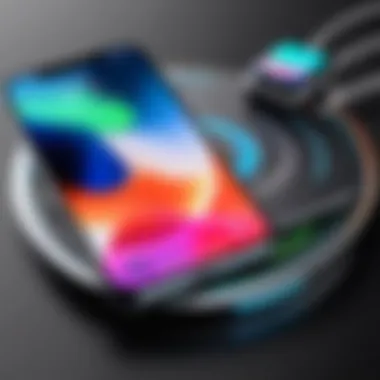
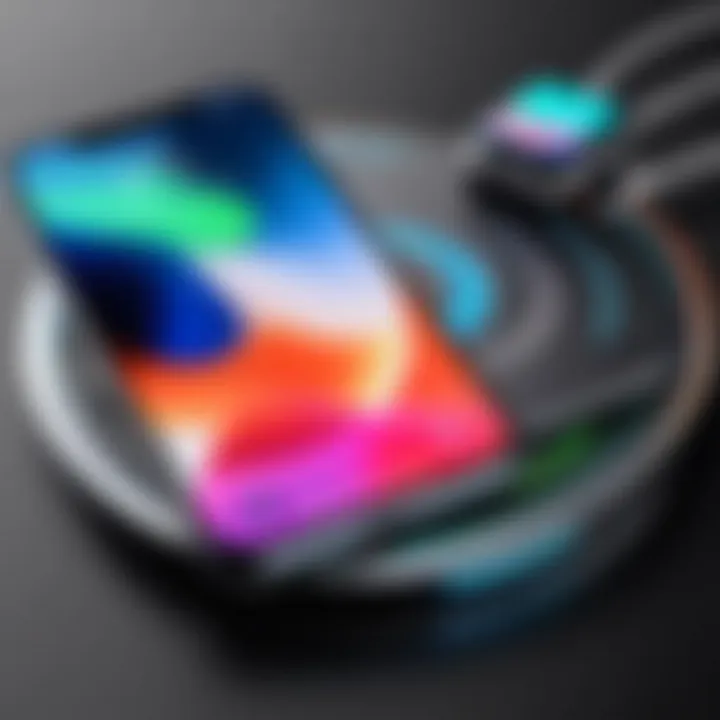
Several benefits arise from this comparative analysis:
- Benchmarking Performance: Establishing how efficiently the iPhone delvers charging power against similar models.
- Consumer Choices: Helping consumers choose devices based on their preferences for charging speed and technology compatibility.
- Market Trends: Understanding trends in smartphone technology that may impact future iPhone models.
iPhone Series Comparison
The iPhone 12 series serves as a direct predecessor to the iPhone 13 Pro Max. One significant aspect to explore is wireless charging speed. The iPhone 12 models typically support up to 15 watts when using MagSafe. In contrast, the iPhone 13 Pro Max maintains similar maximum speeds while also improving efficiency in various charging environments.
Reviewing user reports reveals that many users found the iPhone 12 series slightly slower in certain conditions, particularly when faced with obstacles like cases that could interfere with charging alignment. The newer model aims to resolve some of these issues through optimized coil designs and better heat dissipation.
In terms of battery capacity, both series feature similar designs, yet the iPhone 13 Pro Max benefits from newer energy management technologies. Even small gains in energy efficiency can lead to noticeable improvements in charging experiences.
Android Competitors Overview
In the competitive landscape of Android smartphones, brands like Samsung and OnePlus offer charging solutions that rival Apple's technology. For instance, Samsung Galaxy S21 and OnePlus 9 support fast wireless charging of up to 15-20 watts. This approach leads us to ask: how does the iPhone 13 Pro Max measure against these devices?
- Charging Speed: While both Samsung and OnePlus have increased their charging wattage, the charging efficiency under real-world conditions can vary greatly. Apple's integration of software and hardware often results in smooth charging, without overheating or performance loss.
- User Feedback: Surveys reveal a mixture of experiences among Android users. Some find Android devices beneficial for their high-watt charging capabilities. Others mention the iPhone's reliability and ecosystem as advantages.
"In real-world tests, iPhone 13 Pro Max wireless charging is not just about the wattage but also how swiftly it charges without overheating, which many users commend."
Ultimately, the wireless charging experience is not merely defined by maximum wattage alone. It involves several factors such as heat management, charging efficiency, and long-term battery health. By comparing these attributes with rivals, consumers can arrive at an informed decision regarding their next smartphone investment.
Environmental Factors Affecting Charging Speed
The wireless charging speed of the iPhone 13 Pro Max can vary significantly due to environmental factors. Understanding these influences is crucial for users who want to optimize their charging experience. Various elements come into play, such as room temperature and the material of the surface on which the device rests while charging. These conditions can dictate how efficiently power transfers from the charger to the device.
Users often underestimate the impact of their surroundings, but it can lead to noticeable differences in charging performance. For instance, optimal charging requires a stable environment. If the surrounding conditions are not ideal, the charging speed may slow down or fluctuate. Recognizing how these factors work will help users make informed choices.
Room Temperature Effects
Room temperature is a critical factor influencing the charging speed. Wireless charging, while convenient, generates heat during the process. An increase in ambient temperature can lead to overheating, causing the charging speed to decrease. This is a common safeguard designed to protect the battery and device from damage.
For optimal performance:
- Ideal Temperature Range: Apple's specifications state that the ideal environment is between 0 to 35 degrees Celsius.
- Cooling Mechanisms: If the device exceeds the threshold, it may automatically reduce its charging speed to enhance cooling.
- Long-Term Impact: Prolonged exposure to high temperatures could degrade battery life over time.
It's advisable for users to charge their devices in a climate-controlled setting whenever possible. Keeping the device away from direct sunlight or heat sources can help maintain optimal charging speeds.
Surface Material Impact
The surface material where the iPhone 13 Pro Max is placed during charging also affects its speed. Different materials conduct heat differently, which can impact the efficiency of charging.
Consider the following points regarding surface materials:
- Materials to Use: Hard surfaces, like metal or glass, can cause significant heat accumulation. This can slow down the charging process as it may trigger overheating safeguards.
- Non-Conductive Surfaces: Surfaces made from materials such as rubber, wood, or fabric are preferable as they prevent excessive heat buildup.
- Alignment with Charger: The effectiveness of wireless charging relies heavily on the proper alignment of the iPhone with the charging coil. If misalignment occurs due to an uneven or unsuitable surface, charging efficiency may drop.
Choosing the right surface for charging not only aids in optimal performance but also enhances user experience. In summary, both room temperature and surface material are crucial considerations that can significantly impact the charging speed of the iPhone 13 Pro Max.
Best Practices for Efficient Wireless Charging
Wireless charging offers convenience, but to truly leverage its benefits, users must adopt certain best practices. Efficiency in wireless charging not only optimizes performance but prolongs the lifespan of devices and accessories. By employing these methods, users can enhance their experience and ensure that their iPhone 13 Pro Max charges effectively and swiftly.
Optimal Charger Selection
When selecting a charger, it is crucial to choose one that aligns with the specifications of the iPhone 13 Pro Max. Apple's own MagSafe chargers are engineered explicitly for this device, providing maximum efficiency. MagSafe technology enables a seamless connection that enhances charging speed, delivering up to 15 watts of power.
Using third-party chargers can introduce variability in charging speed. Some chargers may not fully support the Qi standard or may deliver inconsistent power. Therefore, it is advisable to verify compatibility with the iPhone 13 Pro Max before purchasing. Opting for chargers that are Qi-certified ensures that they meet basic safety and efficiency standards.
Additionally, consider the charging pad's design. Pads with proper alignment features help maintain optimal contact with the device, minimizing energy loss. Placement becomes a key factor here, as even slight misalignments can reduce charging performance.
Maintaining Device Condition
The condition of the iPhone 13 Pro Max plays a significant role in wireless charging efficiency. Keeping the device free of obstructions is fundamental. Cases that are too thick can disrupt the heating and hinder power transfer, resulting in longer charging times. It is advisable to use cases that are designated as compatible with wireless charging to avoid such issues.
Moreover, the cleanliness of both the device and charger matters. Dust and debris can affect the connection between the charger and the phone. Regularly cleaning the charging surfaces with a soft cloth will ensure a better interface for power transfer.
Lastly, consider the temperature of the charging environment. Devices can generate heat during the charging process, and placing the iPhone on a surface that allows for heat dissipation is essential. Avoid charging on soft surfaces like beds or couches where heat buildup might occur. Keeping the device cool enhances performance and longevity.
"Selecting the right charger and maintaining your device condition can drastically improve wireless charging efficiency."
User Experiences and Feedback
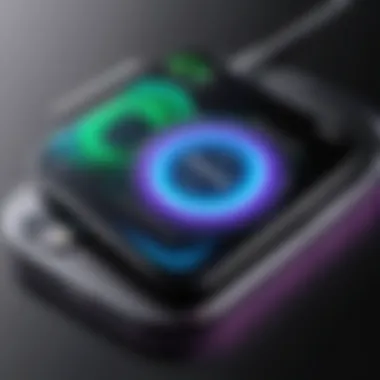
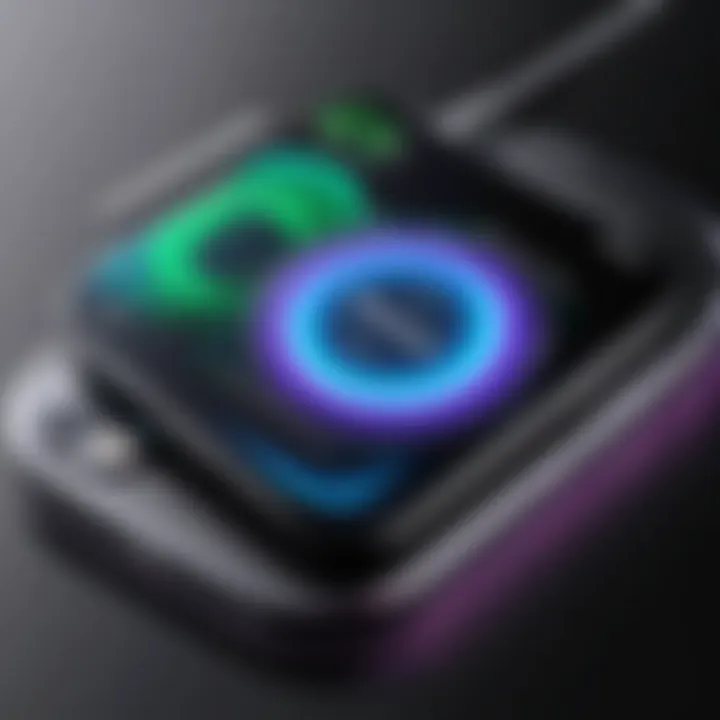
Understanding user experiences and feedback is crucial when analyzing the wireless charging speed of the iPhone 13 Pro Max. This section sheds light on the practical implications of charging in everyday scenarios, driving home the relevance of user input in assessing real-world performance. Users’ feedback often highlights not just the specifications, but also the nuances that can affect performance—an essential consideration for tech-savvy individuals looking to make informed decisions.
Through the lens of user experiences, we can discern a wealth of information regarding charging behaviors, preferences, and pain points. This qualitative data provides insight into how effectively the technology meets the needs of its users. Observing trends can also offer indications of future improvements or persistent issues that might require attention.
Surveys and Trends
Surveys serve as a vital resource in collecting data on user experiences with the iPhone 13 Pro Max's wireless charging capabilities. These surveys can highlight preferred charging methods, frequency of use, and the perceived effectiveness of various chargers.
- Key insights from user surveys include:
- Majority of users prefer the convenience of MagSafe for its alignment and speed.
- Users report variability in charging speeds based on the charger brand used.
- Environmental influences such as heat generation are frequently mentioned, especially during longer charging sessions.
Overall, trends emerging from this feedback can shape our understanding of what users expect versus what they experience, which is invaluable for future device iterations and accessory compatibility.
Common Issues Reported
Identifying common issues that users experience with wireless charging is essential for providing a complete analysis. While the iPhone 13 Pro Max excels in many areas, no technology is without flaws. Notably, some users have raised concerns regarding:
- Overheating: Some users report that the device tends to heat up during charging. This could be a result of the wireless charging process itself or ambient temperature conditions.
- Connection Issues: Alignment can sometimes be a challenge with MagSafe chargers, leading to slower charging speeds. Users have observed that even slight misalignment can result in diminished performance.
- Compatibility with Third-Party Chargers: There are instances where third-party chargers fail to deliver the expected speeds, raising questions about reliability.
These concerns shed light on areas where improvements can be made, fostering a more robust understanding of wireless charging dynamics.
"User feedback is a crucial element in enhancing technology. It influences manufacturer decisions on future advancements."
By focusing on user experiences and feedback, we can illuminate both the strengths and weaknesses of the wireless charging phenomenon related to the iPhone 13 Pro Max, empowering the tech community with knowledge that complements the technical specifications.
Future of Wireless Charging Technology
The evolution of wireless charging technology continues to shape the landscape of mobile device charging. For users of the iPhone 13 Pro Max, understanding the future of this technology offers insights into potential enhancements that may affect their charging experience. One significant direction this technology is taking involves increasing efficiency and speed. As smartphone capabilities advance, the demand for quicker charging solutions intensifies. This transition isn't merely about faster energy transfer; it's also about ensuring that the charging process remains safe and optimized for device longevity.
Another critical element in the future of wireless charging lies in standardization. The Qi standard has established itself as a reliable choice for many manufacturers. However, innovations within this framework could enable more versatile charging solutions. Enhanced interoperability among different brands' devices means greater user convenience. Users will appreciate the ability to charge multiple devices seamlessly, regardless of the brand.
Benefits of Future Wireless Charging
The benefits of these advancements are multi-faceted:
- Increased Charging Speeds: Future innovations are expected to push charging speeds beyond what is currently available. This can significantly reduce wait times for users.
- Greater Efficiency: Improved technology can lead to more energy-efficient charging, which is better for the environment and can save users money on electricity bills.
- Enhanced User Convenience: The ability to charge various types of devices on one platform can simplify the user's charging setup.
"The future of wireless charging will likely redefine convenience and efficiency in mobile technology."
However, there are considerations too. As faster charging isn't necessarily safer, manufacturers need to ensure that rising speeds do not compromise battery health over time. Users should remain informed about these advancements as they influence preferences and expectations.
Emerging Innovations
Wireless charging technology is poised for several exciting innovations. Key advancements can include:
- Resonant Inductive Coupling: This approach could enable mid-range distances for charging. No longer will users need to perfectly align their device with the charger. This flexibility has the potential to make wireless charging hassle-free in more settings.
- Active Cooling Technologies: Devices may integrate cooling systems to manage heat during charging. Such innovations would improve performance and enhance long-term battery life.
- Solar and Ambient Energy Charging: Future systems may adopt solar energy to allow devices to recharge using available light. This could be particularly popular with users who prefer environmentally friendly solutions.
Predictions for iPhone Models
Considering the trajectory of wireless charging technology, there are several predictions regarding future iPhone models and their capabilities. As models evolve, we may see:
- Enhanced MagSafe Features: Subsequent versions of the iPhone could leverage MagSafe advancements for increased charging speeds and compatibility with more accessories.
- Integration of AI: Artificial intelligence may be employed to analyze a user’s charging habits, enabling smarter charging options that maximize efficiency and minimize wear.
- Broader Compatibility: Future iPhones are likely to support a wider range of charging standards, making them more adaptable to various chargers on the market.
In summary, the future of wireless charging technology promises not only improvements in speed and efficiency but also increased convenience and compatibility. As advancements continue, users of devices like the iPhone 13 Pro Max will benefit from a more streamlined and effective charging experience.
Culmination and Final Thoughts
In synthesizing the information presented in this article, it is clear that understanding the wireless charging speed of the iPhone 13 Pro Max is crucial for both current users and potential buyers. The advancement of wireless charging technology not only demonstrates Apple's commitment to convenience but also reflects broader changes in the smartphone ecosystem.
Wireless charging brings with it benefits beyond mere convenience. Users can enjoy a minimalist charging experience while reducing wear on charging ports. However, factors like charger selection and environmental conditions significantly influence charging efficiency. Recognizing these elements allows users to optimize their charging experience.
"The performance of the iPhone 13 Pro Max highlights the importance of compatibility with the right accessories to achieve optimal charging speeds."
Thorough examination of charging capabilities shows the potential of the iPhone 13 Pro Max to adapt to various conditions and accessories. As battery technology and wireless charging standards continue to evolve, staying informed will help users make intelligent decisions about their devices.
Summary of Findings
The iPhone 13 Pro Max supports fast wireless charging through its integration of the Qi standard and Apple's proprietary MagSafe technology. Key findings include:
- Wireless Charging Speed: The iPhone 13 Pro Max can achieve up to 15 watts when using the MagSafe charger, significantly outperforming many third-party alternatives.
- Factors Affecting Speed: Performance can vary based on the surface type and temperature. Users experience fluctuating speeds in different environments.
- User Feedback: Many users report satisfaction with wireless charging, noting convenience as a major advantage, although some express concerns about heat generation during charging.
Recommendations for Users
To maximize the wireless charging experience of the iPhone 13 Pro Max, consider these recommendations:
- Use MagSafe-Compatible Chargers: Opt for MagSafe chargers to ensure optimal speeds. Look for official products or certified third-party alternatives.
- Monitor Charging Environment: Keep the device on a flat, cool surface. Avoid using cases that might trap heat during charging.
- Regular Updates: Stay informed about iOS updates that may enhance charging performance.
- User Practices: Regularly clean the charging surface and the device's back to ensure good connectivity and prevent slow charging.
By following these strategies, users can ensure they utilize the best charging methods available, preserving the longevity of their device while enjoying the sleek design and innovative features of the iPhone 13 Pro Max.







